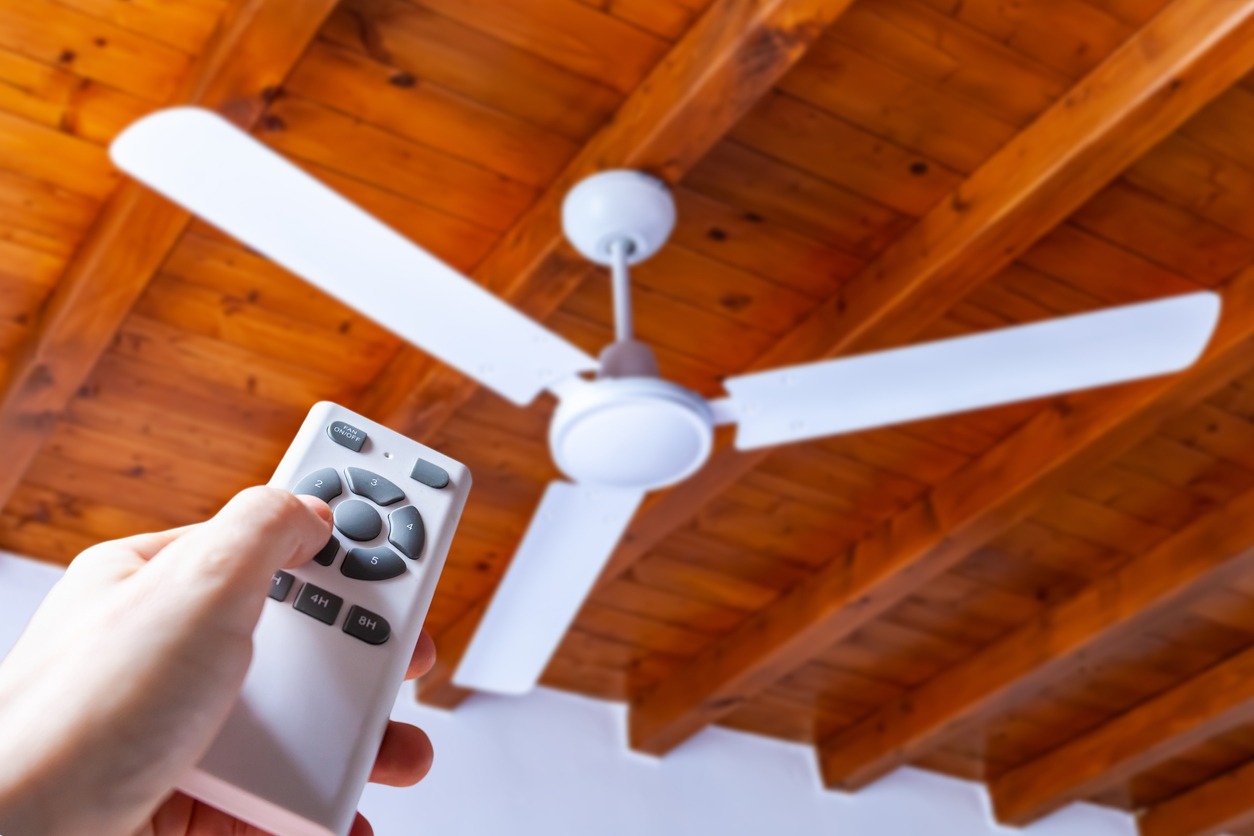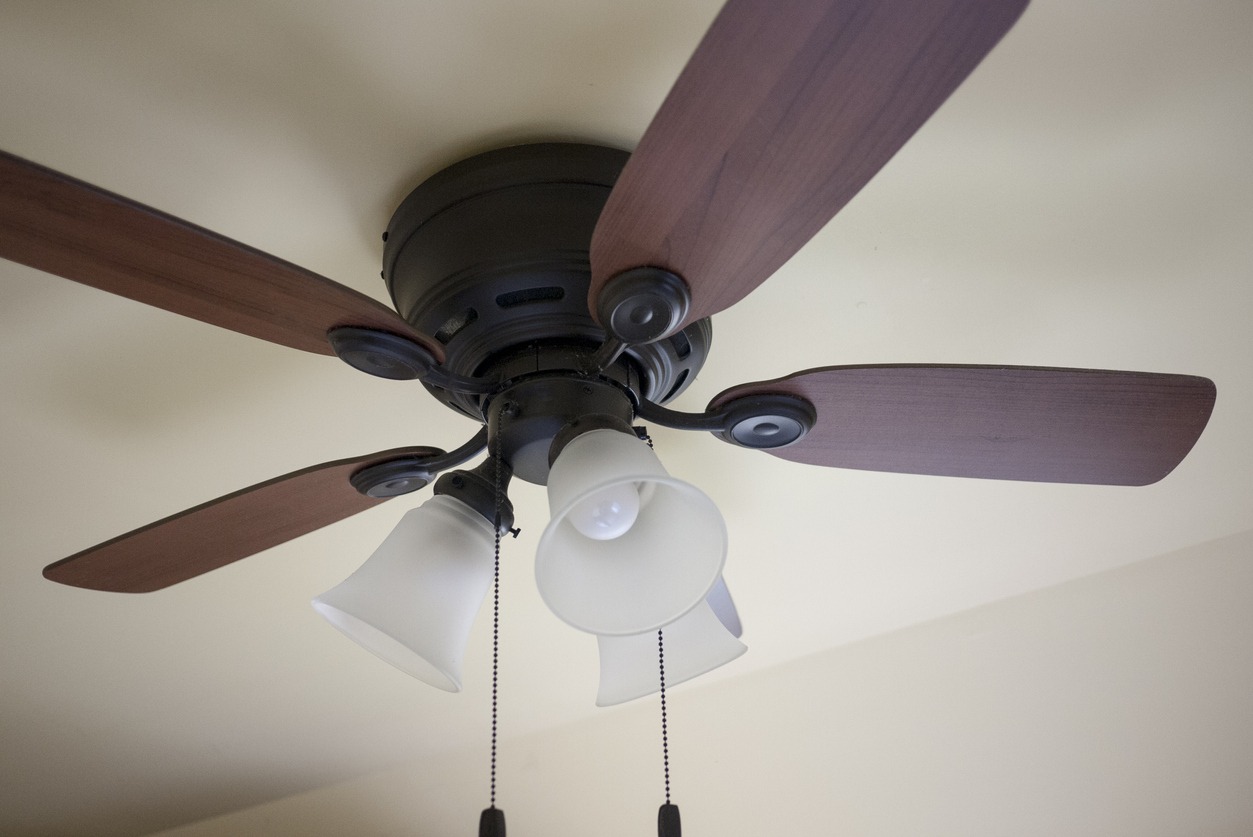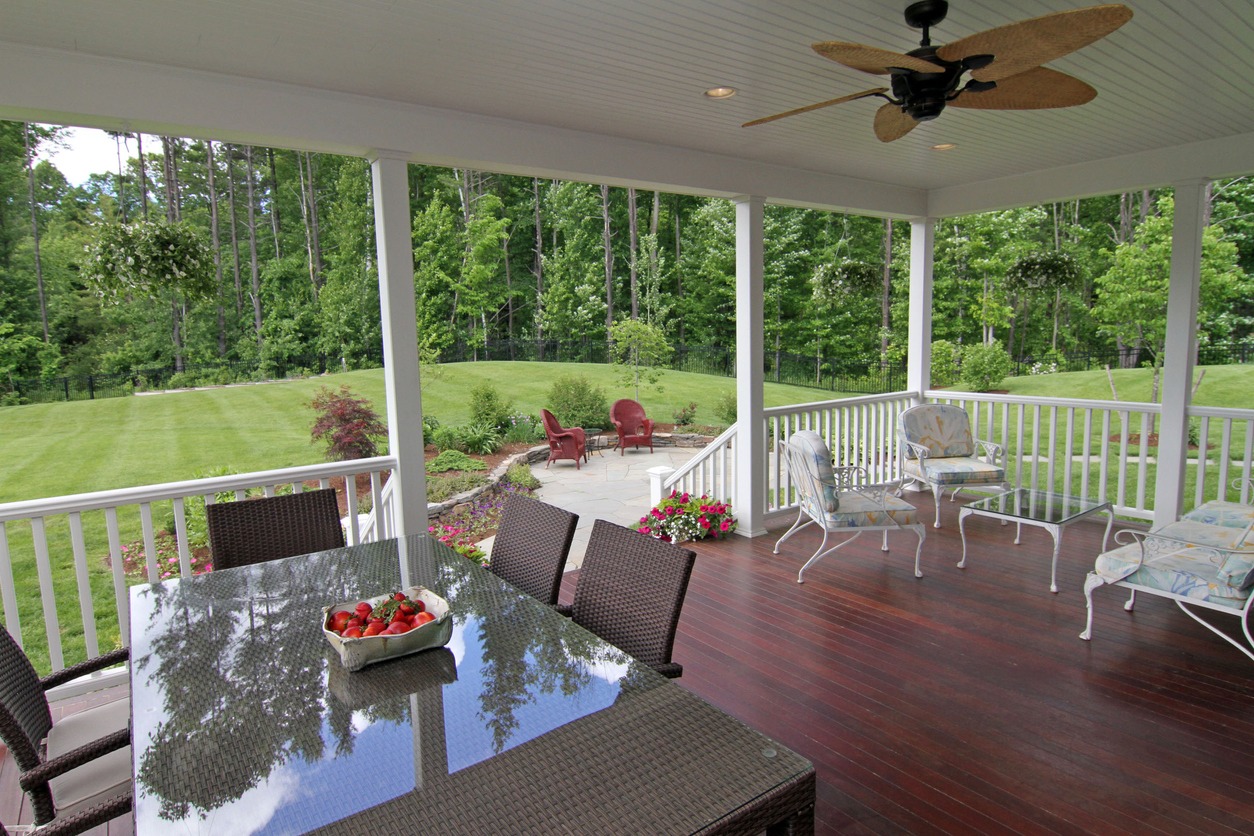A ceiling fan is a device suspended from the ceiling of a room. It features hub-mounted rotating blades that circulate the air to produce a cooling or destratification effect. The advent of ceiling fans changes the world of electrical machines, as well as our homes. They were invented centuries ago but still hold tremendous importance in our lives up to this day. But due to the arrival of air conditioners, ceiling fans may be left on the back burner.
However, despite technological inventions, ceiling fans have successfully maintained their reputation as simple, versatile, and great design pieces throughout the years. Every space in your home needs a different type of ceiling fan. Therefore, it is best to learn about these various types in order for you to pick the right ones for your needs. To help you, in this article, we are giving you a guide to the different types of ceiling fans.
How Do Ceiling Fans Work?
Before we discuss the various types of ceiling fans for your home, let us first understand how they work. The main purpose of a ceiling fan is to keep people cool. It does not really cool the air temperature. It only makes us feel cooler as the fan moves the air around us, which is a process referred to as evaporative cooling.
An example of evaporative cooling is when a cold day feels even colder if there is a breeze due to the wind chill factor. The same thing goes when we sweat on a hot day, and we put the ceiling fan on as the moving air provides a breeze, and it acts the same as wind chill, helping people to feel cool.
The way a ceiling fan is operated depends on its manufacturer, style, and era in which it was made. Below are the different operating methods of ceiling fans: [1]
Pull-Chain or Pull-Cord Control
This is the most common method of operation for ceiling fans used at home. It is equipped with a metal-bead chain or cloth cord that is pulled to cycle the fan through different operational speeds and then back to off. Most ceiling fans with this operating method have three speeds, which are high, medium, and low. However, the speed range can also be anywhere from one to four.
Variable-Speed Control
Back in the 1970s and 1980s, ceiling fans were usually made with variable-speed control. They feature a dial mounted on the fan which, when turned in either direction, continuously changes the speed at which the blades rotated. It is quite similar to a dimmer switch for a light fixture. There were also a few fans that substituted a rotary click-type switch for the infinite-speed dial, which provides a set number of speeds. Different manufacturers also used variable-speed control in different ways. Some control the fan entirely by turning the knob until it clicks out of the “off” position. Others have a pull chain present along with the variable-speed control.
Wall-Mounted Control
There are also some ceiling fans that have their controls mounted on the wall instead of having them on the fans themselves. These are often proprietary or specialized switches. Some of them are digitally controlled by using a computerized wall control. Others have a choke-style switch, which takes different physical forms. These are old types of controls that contain a resistor of some sort to determine how much power is delivered to the fan and how fast it spins.
Wireless Remote Control
In recent years, remote controls have become popular for controlling ceiling fans. There are ceiling fan models that use this as their sole form of operation. However, others purchase an after-market kit and install a remote control on an existing fan. A handheld remote control transmits radio frequency or infrared signals to a receiver unit installed in the ceiling fan that interprets and acts on the signals.
Different Types of Ceiling Fans
Ceiling fans can make the spaces in your home comfortable and all-season while delivering an eye-catching ambiance to your overall design theme. In addition to providing comfort by circulating the air in the room, they can also help lower your energy bill as you will be less likely to kick on your air conditioning unit.
While ceiling fans are indeed beneficial both inside and outside your home, remember that they are not one-size-fits-all. There are different types of ceiling fans, and each of them offers qualities that are appropriate for different parts of your home. To help you learn more about these, below are the different types of ceiling fans:
Standard Ceiling Fans
These are the most common types of ceiling fans that you can usually see in most homes. They come in different styles, making them easy to match with any décor. Most standard ceiling fans feature four or five blades. They can come with or without a light kit in the center.
Standard ceiling fans usually extend from a downrod, which is a metal pipe that connects the mounting brackets of the fan to the motor housing. It allows the ceiling fan to be mounted on both flat and sloped ceilings. But you need to ensure that the downrod you are choosing has the correct length for the height of your ceiling. Check out the guide below:
| Ceiling Height | 9 ft | 10 ft | 12 ft | 14 ft | 16 ft | 18 ft | 20 ft |
| Downrod Length | 6 in | 12 in | 24 in | 36 in | 48 in | 60 in | 72 in |
Standard ceiling fans with a downrod need to be installed to make sure that the fan blades are at least seven feet off the ground in order for safe traffic to flow beneath the fan.
Low-Profile Ceiling Fans
This type of ceiling fan is also referred to as a hugger fan or a flush-mount ceiling fan. It can provide the air circulation that you need, and it is built to accommodate lower ceiling heights. They are ideal when the ceiling heights in your home are eight feet tall or less. Instead of using a downrod, the ceiling fan is installed directly onto the mounting bracket. This way, there will be enough ground clearance while keeping the ceiling fan effective. There are also many different styles and finishes of low-profile ceiling fans available in the market.
ENERGY STAR® Ceiling Fans
If your goal is to save money on your electric bill and make a better choice for the environment, then ENERGY STAR® ceiling fans are great for you. It is a classification made by the Environmental Protection Agency to help consumers determine when a product has gone through efficiency testing.
For a ceiling fan to be given an Energy Star rating, it needs to use 20% to 30% less energy compared to what federal standards require. The rating is given to show consumers the brands and products that may help them save money on their energy bills and will lower their environmental impact.
ENERGY STAR® fans come in both low-profile and standard varieties. Most of them also have aerodynamic blades that help them slice through the air with minimal effort. There are also many styles that have LED light features to help illuminate different rooms in your home.
Dual-Motor Ceiling Fans
There are also dual-motor ceiling fans that can give you twice the comfort. They feature industrial styles and have a central motor housing attached to two horizontal rods. Each rod supports an adjustable fan head that is complete with a motor. There are also dual-motor ceiling fans that feature light kits to make your space both breezy and bright.
One of the great features that dual-motor ceiling fans offer is that you can set each fan at its own speed to customize comfort levels on both sides of the room. These are great even for commercial and public spaces, as they can direct air circulation in particular areas at customizable speeds.
Smart Ceiling Fans
At the present time, almost all types of appliances at home can be bought as smart devices and incorporated into your home automation system, and ceiling fans are not an exception. There are now smart ceiling fans that come with or without light kits. These fans allow for remote control from your smartphone or tablet.
Smart ceiling fans require a connection to existing home automation systems like Amazon Alexa and Google Assistant, which will make them easier to operate and customize. When your home has high ceilings or short stature, it is best to have a remote option through your smartphone or home automation hub to make it easier for you to use them. Most of them also have adaptive learning features that can sense when you are home or not so they can circulate the air in your home if needed.
Outdoor Ceiling Fans
Your backyard deck, lanai, or patio is a valuable living area in your home. However, they are usually exposed to the elements, which brings their own set of challenges. Therefore, if you are thinking of installing a ceiling fan in those places at home, you need to choose one that is made for outdoor use.
Outdoor ceiling fans are made of strong and durable materials that are designed to hold up moisture, which makes them great for areas that do not get direct rain but may experience lots of humidity and moisture. There are both flush mount and standard ceiling fans for outdoor use. Choosing one still depends on the height of your outdoor room. Aside from that, there are also different ratings that you need to learn about when it comes to outdoor ceiling fans.
Dry Rating: Dry-rated ceiling fans are only for dry conditions or indoor use only. Using them outdoors won’t damage them, but it can be dangerous for your home. It’s because their materials and electrical parts are not made for exposure to the elements.
Damp Rating: When a ceiling fan is damp-rated, they are suitable for areas that do not come in contact with direct water but may be exposed to humidity or indirect moisture. These ceiling fans are great to be installed on a covered patio, covered outdoor kitchen, or screened porch.
Wet Rating: Ceiling fans that are wet-rated are very durable and are suitable for areas where they will be directly exposed to rain, snow, and even humid and salty ocean breezes. Therefore, if you are unsure what amount of weather your outdoor room gets, you can then choose a wet-rated fan to ensure long-lasting durability.
Commercial Ceiling Fans
Commercial ceiling fans are larger, more durable, and more efficient. They are mostly oversized and can run continuously for hours. They are usually installed in gymnasiums, warehouses, and other large spaces. They are commonly used to lift air up to exhaust fans, they can also be reversed in a direction to pull the air up from below for better ventilation. Commercial ceiling fans can help extend the life of air conditioners as they can be used instead or in tandem with them. But of course, since they are for commercial use, they are also more expensive than ceiling fans used for homes.
Things to Consider When Choosing a Ceiling Fan
If you are thinking of buying a ceiling fan for your home soon, below are some of the important things that you need to consider in order to choose the best one for your needs:
Number of Blades
Most ceiling fans feature four or five blades. The more blades a ceiling fan has, the quieter it is. However, it also circulates less air, and the motor needs to work to spin it due to the increased drag of the extra blades. That is why most industrial fans like wind turbines only have two or three blades in order for them to spin as fast as possible.
Blade Pitch
The blade pitch pertains to the angle of the blades. This is also important to look into when choosing a ceiling fan, as it affects the airflow. Most modern ceiling fans available in the market have a blade pitch of 10 to 15 degrees. The lower the pitch number, the flatter the blade. This means that less energy is needed to move the blades. However, if the fan spins flatter blades at higher speeds, it may wobble.
When the blade pitch increases, the drag also increases, and the motor needs to work harder in order to spin the fan. When flatter blades move at high speeds, they can move less air compared to steeper blades at a lower speed.
Blade Size
The size of the ceiling fan’s blade also matters. A longer blade can circulate more air, but the fan will need a more powerful motor to spin them. Most ceiling fans available in the market measure between 29 to 54 inches. Below are the size recommendations of Energy Star based on room size:
| Up to 75 ft2 (7 m2) | 29 to 36-inch blades (74 to 91cm) |
| 76 to 144 ft2 (7 to 13 m2) | 36 to 42-inch blades (91 to 107cm) |
| 144 to 225 ft2 (13 to 21 m2) | 44-inch blades (112cm) |
| 225 to 400 ft2 (21 to 37 m2) | 50 to 54-inch blades (127 to 137cm) |
You need to measure the distance between the floor and ceiling of the room in order for you to work out the length of any needed downrod. Low-profile ceiling fans can be attached next to the ceiling in rooms with ceilings lower than 9 feet. If you have a higher ceiling, the lowest point of your ceiling fan should be 7 feet from the floor.
Motor
The motor of ceiling fans has different rotations per minute (RPM). It is ideal to choose a fan with six separate RPM settings to give maximum speed options. But most of the time, three speeds are enough. It is also better to have a fan that constantly works at a lower speed compared to making it work in bursts at a faster speed.
There are also ceiling fans that feature a reversible motor. This allows you to spin the blades either clockwise or counterclockwise. During the summer, turning your ceiling fan counterclockwise is ideal for it to assist with cooling. On the other hand, in the winter, you can rotate the ceiling fan clockwise to help keep the room warmer when you are using the heating.
Lighting Style and Kit
If you are aiming to get a ceiling fan that comes with a light kit, there are many options to choose from. You can pick from classic to contemporary lights that will compliment the look of your fan and your living space. There are ceiling fans that come with spotlights, single light bowls, or multiple glass shades that can be added to a filter to boost the design. Pick a lighting style and kit that will match the theme or décor of your room.
Conclusion
Learning about and understanding the different types of ceiling fans is important in order to choose the best ones for the different areas in your home. Once you’ve determined what types of ceiling fans are the best for your space, you will be able to make the appropriate choice that will help improve your home. We hope this post helped you learn more about the different types of ceiling fans.






